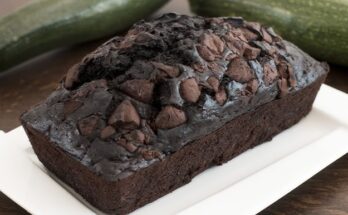Tahini Sauce Recipe: Tahini sauce is a rich, creamy condiment made from tahini paste—ground sesame seeds—often blended with lemon juice, garlic, and water to create a silky, savory dressing.
It’s a staple in Middle Eastern cuisine but has won the hearts of food lovers around the globe for its nutty flavor and velvety texture.
Whether drizzled over falafel, served alongside grilled meats, or used as a dip for fresh veggies, tahini sauce delivers a unique, complex flavor that can elevate any dish.
Why Tahini Sauce is a Must-Have in Your Kitchen
Let’s be honest—some sauces just change the game, and tahini sauce is one of them. It’s not only incredibly versatile but also healthy, being packed with plant-based protein, healthy fats, and a decent dose of calcium and iron. Plus, it’s naturally vegan, gluten-free, and can be customized to match your taste buds. Think of it as the secret weapon that transforms simple dishes into something special. From jazzing up leftovers to serving as the star in grain bowls, tahini sauce deserves a front-row seat in your fridge.
Ingredients Needed for Tahini Sauce
Core Ingredients
To make the most traditional and creamy tahini sauce, you only need a handful of ingredients:
- Tahini paste (½ cup) – This is your main ingredient. Choose a good-quality tahini that’s smooth and not overly bitter.
- Fresh lemon juice (2-3 tbsp) – Adds brightness and a bit of tang that balances the rich tahini.
- Garlic clove (1, minced or crushed) – Infuses the sauce with a deep savory kick.
- Cold water (¼ to ½ cup) – Used to thin out the sauce and create that silky, spreadable texture.
- Salt (¼ tsp or to taste) – Enhances all the other flavors.
Optional Add-ons for Flavor Variations
You can keep it classic or dress it up depending on your mood or the dish you’re pairing it with. Here are a few creative extras:
- Cumin or paprika (a pinch) – For a bit of warmth or smokiness.
- Chopped parsley or cilantro – For a fresh herbal twist.
- Olive oil (1 tsp) – Adds extra richness and shine.
- Maple syrup or honey (1 tsp) – Balances the flavors with a touch of sweetness.
- Yogurt (1-2 tbsp) – If you want it creamier and slightly tangy (not vegan-friendly).
Tools and Equipment You’ll Need
You don’t need a fancy kitchen setup for this recipe—just a few essentials:
- Mixing bowl – Preferably medium-sized, to give you space to whisk easily.
- Whisk or fork – For blending the ingredients until creamy.
- Measuring spoons and cups – Precision helps keep the consistency right.
- Garlic press or fine grater – To get that garlic super fine, so it blends smoothly.
Step-by-Step Guide to Making Tahini Sauce
Step 1: Gathering the Ingredients
Before diving in, lay out everything you need. Having all the ingredients and tools prepped makes the process smoother and faster. Make sure your tahini paste is at room temperature so it mixes more easily, and give your lemon a good roll on the counter to release more juice.
Step 2: Mixing the Tahini and Lemon Juice
In your mixing bowl, combine the tahini paste and lemon juice. Stir them together vigorously. At first, it might seize up and look clumpy—that’s totally normal! It’s just the acid from the lemon reacting with the dense tahini. Keep mixing. After a few seconds of stirring, it’ll start to loosen up into a thick, creamy base. This step is crucial as it sets the tone for the texture of your sauce.
Step 3: Adding Garlic and Salt
Next, toss in the minced garlic and salt. Garlic is your flavor bomb—it gives the sauce depth and complexity. You can adjust the quantity based on how garlicky you like it. A little salt also helps cut the bitterness of tahini and balances the lemon.
Step 4: Gradually Adding Water for Creaminess
Here’s where the magic happens. Slowly add cold water, a tablespoon at a time, while whisking continuously. You’ll notice the sauce transform from a paste to a smooth, pourable consistency. How much water you need depends on your tahini’s thickness and your desired consistency—more water for a dressing, less for a dip. Keep whisking until it’s velvety smooth.
Step 5: Adjusting the Flavors to Your Taste
Now’s the time to make it your own. Taste your sauce and tweak as needed. Want it tangier? Add more lemon. More savory? A pinch more salt or another clove of garlic might do the trick. Prefer a hint of spice or sweetness? Throw in a dash of cayenne or a bit of maple syrup. This is your moment to personalize.
Tips for Perfect Tahini Sauce Every Time
Making tahini sauce seems easy—and it is—but there are a few key tricks that separate good from absolutely amazing. If you’ve ever ended up with a bitter, lumpy, or too-thin mess, these tips will help you nail it every single time.
1. Always Use Good-Quality Tahini
The base ingredient makes all the difference. Not all tahini is created equal. Some are super bitter, others too thick or gritty. Look for tahini that’s made with hulled sesame seeds and has a smooth, pourable texture. Stir it well before using—natural oils separate just like with natural peanut butter.
2. Add Water Slowly
Don’t just dump all the water in at once. Pour it in gradually, whisking as you go. This gives you more control over the final texture. Remember, tahini sauce thickens the more it sits, so slightly thinner than desired is often the right call.
3. Don’t Skip the Lemon Juice
Aside from balancing the earthy tahini flavor, lemon juice reacts chemically with the sesame paste to lighten and smooth the sauce. It actually helps it blend better. So unless you’re allergic or seriously averse to lemon, don’t skip it!
4. Embrace the Garlic—but Not Too Much
Garlic is powerful, and raw garlic can quickly take over your sauce if you overdo it. Start small and increase only after tasting. Alternatively, you can roast the garlic beforehand for a milder, nuttier flavor.
5. Whisk Like You Mean It
Consistency is everything. Use a whisk or a fork and beat that sauce like you’re making whipped cream. The more you whisk, the creamier it gets. Some folks even toss it into a blender or food processor for that super-smooth finish.
Storing and Shelf Life of Homemade Tahini Sauce
Once you’ve made this heavenly sauce, you’ll want to keep it fresh and ready to go. Here’s how to do that:
Refrigeration is Key
Tahini sauce lasts up to a week in the refrigerator. Store it in an airtight container—glass jars are ideal—and give it a quick stir before each use since it may separate slightly over time.
Freezing for Long-Term Use
Need it to last even longer? Tahini sauce freezes beautifully. Pour it into an ice cube tray, freeze, and then transfer the cubes to a zip-top bag. Each cube can be thawed and used as needed—perfect for small servings.
Signs It’s Gone Bad
If your sauce starts to smell sour, changes color, or develops mold, it’s time to say goodbye. Fresh tahini sauce has a clean, nutty aroma and a creamy appearance. Any changes from that and it’s no longer safe to eat.
How to Use Tahini Sauce in Meals
Tahini sauce is a culinary chameleon—it adapts beautifully to whatever you throw it at. Once you’ve got a fresh batch, here’s how to make the most of it in everyday meals:
As a Dip
You can’t beat tahini sauce as a dip for fresh veggies, warm pita bread, or crunchy crackers. It’s a lighter, healthier alternative to creamy dips loaded with dairy. Try it with:
- Carrot and celery sticks
- Sliced cucumbers or bell peppers
- Grilled halloumi or falafel
- Oven-baked potato wedges
As a Salad Dressing
Just thin it out with a bit more water or lemon juice and drizzle it over your greens. It’s especially good with bold, Mediterranean flavors. Try it in:
- Kale and chickpea salad
- Couscous or quinoa bowls
- Tabouli or fattoush
- Roasted beet and arugula mix
In Sandwiches and Wraps
Tahini sauce works wonders as a spread in wraps, sandwiches, and pita pockets. Use it as you would mayonnaise or hummus, and you’ll get a creamier, tangier flavor profile. It’s amazing with:
- Grilled chicken or tofu
- Falafel and pickled veggies
- Roasted veggie wraps with eggplant, zucchini, and peppers
Over Roasted Vegetables or Meats
This is where tahini sauce shines. Drizzle it over roasted cauliflower, carrots, sweet potatoes, or Brussels sprouts. It also pairs beautifully with grilled meats and seafood like:
- Chicken shawarma
- Lamb kebabs
- Baked salmon
FAQs about Tahini Sauce Recipe
1. What is tahini sauce made of?
Tahini sauce is primarily made from tahini, a paste derived from ground sesame seeds. The basic ingredients include tahini paste, lemon juice, garlic, and water. Some variations might include olive oil, salt, and herbs to enhance the flavor.
2. Is tahini sauce healthy?
Yes, tahini sauce is considered healthy. It is rich in healthy fats, vitamins, and minerals, particularly from the sesame seeds which are a good source of calcium, magnesium, and antioxidants. However, moderation is key as it is also calorie-dense.
3. How do I make tahini sauce thinner?
To make tahini sauce thinner, simply add small amounts of water gradually and whisk until you reach the desired consistency. Be cautious not to add too much water at once to avoid making it too runny.
4. Can I make tahini sauce without garlic?
Absolutely! If you prefer not to use garlic, you can leave it out. The sauce will still be delicious, although it will have a milder flavor. You might consider adding a pinch of cumin or paprika for an extra touch of flavor.
5. How long can I store homemade tahini sauce?
Homemade tahini sauce can be stored in the refrigerator in an airtight container for up to a week. Make sure to stir it if it separates before using.
6. What can I serve with tahini sauce?
Tahini sauce is incredibly versatile. It can be used as a dressing for salads, a dip for vegetables, or a sauce for grilled meats and falafel. It’s also fantastic drizzled over roasted vegetables or mixed into hummus for extra creaminess.
7. Is tahini sauce vegan?
Yes, tahini sauce is naturally vegan, making it a great condiment choice for those following a plant-based diet.
Conclusion
Tahini sauce isn’t just another condiment—it’s a gateway to more flavorful, vibrant meals. With just a handful of simple ingredients and a few minutes of your time, you can create a sauce that complements, enhances, and transforms so many dishes. From classic Middle Eastern staples to modern-day power bowls, this creamy, garlicky, lemony magic will elevate anything it touches. Make a big batch, store it well, and experiment with all the delicious ways you can use it. Once you start, you’ll wonder how you ever lived without it.



